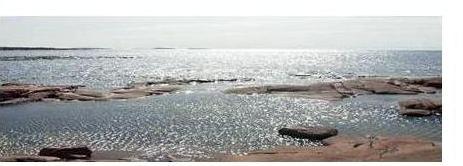Ecological Quality in the Baltic Sea
What do we want the Baltic Sea ecosystem to look like? How can science and management support our common vision?
Ecological Quality Objectives
Ecological Quality Objectives (EcoQOs), associated indicators and target levels of these indicators are central tools in identifying, striving towards and achieving a healthy ecosystem. EcoQOs are tools in implementing the ecosystem approach to which HELCOM has committed itself by the Bremen Ministerial Declaration of 2003.
EcoQOs of HELCOM are statements integrating as many as possible of the desired characters of the Baltic Sea ecosystem. EcoQOs are environmental milestones towards which HELCOM is working.
Present EcoQOs
Each EcoQO will have to be formulated so that they are intelligible for both experts and non-experts and emphasis will need to be placed on the most important properties of the ecosystem to protect.
The HELCOM EcoQO project has used the following four higher level objectives, presented at HELCOM 25/2004, to direct the development of specific EcoQOs for Baltic Sea ecosystem health:
Reduce eutrophication in order to restore ecological balance within the Baltic Sea and to ensure a functioning marine ecosystem
Hazardous substances within the marine environment shall not cause irreversible changes in the functioning of the ecosystem and human
Ensure sustainable exploitation of living aquatic resources that provide sustainable economic, environmental and social conditions.
A resilient ecosystem that has a sufficient number and connectivity of habitats ensuring healthy species composition and maintained diversity
The HELCOM EcoQO Project has developed the following initial EcoQOs:
Eutrophication
Restored water clarity
No oxygen depletion, where it should not occur naturally.
Depth range of perennial water plants and algae returned to regionally defined levels.
No exceptional massive algal blooms.
Growth of opportunistic (nuisance) species returned to regionally defined levels
Hazardous Substances
- Concentrations of hazardous substances in the Baltic Sea near background values for naturally occurring substances and close to zero for man-made substances.
No illegal oil spills
All fish caught in the Baltic Sea should be suitable for human consumption.
Toxic substances shall not cause sub-lethal, intergenerational or transgenic effects to the health of marine organisms (e.g. reproductive disturbances).
- Attain pre-Chernobyl concentrations of man-made radioactivity in the Baltic Sea ecosystem causing risk neither to human nor the natural systems.
Fisheries
All stocks managed under a long term management plan and well within safe biological limits (including non-assessed species). Those at present below safe biological limits restored.
Impact of fishing practices on habitats and non-target species populations should be minimized to (e.g. by-catch of marine mammals & sea birds).
The production of wild salmon should gradually increase to attain at least 50% of naturally production capacity of every individual river before the year 2010, this in order to achieve a better balance between wild and reared salmon.
All mariculture activity within the Baltic Sea should be practiced to ensure it contributes
Loss of habitats and biodiversity
- Minimize the introduction of non-native species, especially from ship mediated introductions.
Preserve a sufficient percentage of natural coastal landscapes and ecosystems within the Baltic Sea ensuring long-term interconnectedness between areas and protection of declining/endangered species.
Restored species supporting climax communities in areas where they have disappeared, such as: Bladder wrack beds (Fucus), Eel grass meadows (Zostera) and Mussel beds (Mytilus edulis)
- Ensure healthy and viable populations of top-predator species (e.g. porpoises, seals, eagles, salmon, trout & cod).


